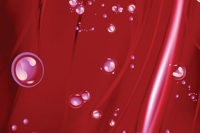Sometimes in existing construction, we just need to stick with the existing HVAC system. To meet this need, existing equipment, like chillers, AHUs, and refrigeration compressors, are being replaced with equipment that is available with the variable refrigerant concept. We are now seeing water source heat pumps (WSHP), dehumidifiers, make-up air units, chillers, refrigeration compressors, and heat pump boilers/water heaters using the VRF technology. This is improving energy efficiency significantly while also reducing noise, providing better temperature control, increasing the equipment longevity, and reducing maintenance. This technology allows us to save energy without compromising comfort.
When evaluating which type of HVAC system to recommend, customers are interested in: first cost, operating cost, maintenance intensity, audibility, and longevity of infrastructure. In my experience, VRF technology offers a superior product on all these counts, except first cost. But first cost is getting better as engineers and contractors become more knowledgeable about and comfortable with the products. So, rather than doing a complete HVAC replacement to VRF with a dedicated outside air system, this evolution of variable capacity compressors provides engineers and contractors with many solutions to economically save energy for their customers.
THEN TO NOW
This variable refrigerant capacity technology was first conceived in the United States. However, the patent was allowed to expire when they were not successful in achieving their goal. Japanese manufacturers bought the patent and perfected the concept and introduced the ductless mini split system to the HVAC industry.
Traditionally, refrigeration circuits would meet the part load operation via hot gas bypass. Hot gas bypass does allow the equipment to cycle less often. However, this method of operating at part load does not save any energy.
There are two basic ways to provide efficient part load operation with VRF: inverter-driven compressors and digital scroll compressors. These are two technologies that accomplish the same thing efficiently. There is debate about which method of providing part load will ultimately dominate. For now we see both technologies being offered in a variety of system types. Both technologies offer Air Conditioning, Heating and Refrigeration Institute (AHRI) performance values that are better than energy code minimums on the order of 10% to 30%. The emergence of this technology necessitated new testing methods to better represent the efficiencies. The efficiency is now quantified by the integrated energy efficiency ratio (IEER). It weights the efficiency at part loads of 25%, 50%, 75%, and 100%.
Energy codes up to now have focused on improving the envelope and lighting impact to energy use, challenging architects and lighting designers to meet these strict standards. The envelope and lighting improvements to the energy codes have required designs for energy use/loss on the order of 30% over the last two decades. By comparison, energy code requirements in mechanical systems are easy to exceed with the technological advances in mechanical systems, such as variable refrigerant flow. Imagine the impact to manufacturers if they had to scrap all the code-minimum equipment and retool to provide only this higher quality equipment because the mechanical energy codes were made more stringent.
Water Source Heat Pump
We know that the water source heat pump (WSHP) systems are already very efficient, conservatively saving 20% over code minimum technologies. Regardless of how the temperature of the condenser loop is controlled — either thermostatically controlled with an evaporative cooler (cooling tower) and boiler, or, controlled with a geothermal loop (GSHP) — the heat pump can be significantly more efficient if the compressor can vary the flow of refrigerant to match the load instead of cycling on and off. Adapting the VRF technology to WSHPs can change the efficiency from an energy efficiency ratio (EER) of 13.0 to over 18.0.
WSHPs with the VRF technology include the variable speed compressors and fans, and linear expansion valves. These features reduce energy consumption while increasing reliability, acoustics, and comfort. Figure 1 depicts the value of both the VRF water source heat pump (VRF-WSHP) and the variable flow ground source heat pump (VRF-GSHP) to energy code minimum heat pumps. We see that the energy savings can be over 30% beyond some technologies still allowed in the energy codes. In your research, consider including manufacturers whose websites may offer videos and case studies of how their VRF WSHP work and save energy.
Dehumidifiers
Dehumidification in makeup air units is now offered with variable capacity scroll compressors that vary the flow of refrigerant to meet the actual load. Allowing the compressor to modulate to meet the load provides for better comfort, lower operating costs, longer equipment life, and quieter operation. With VRF, the cooling capacity can modulate from 10% to 100%, matching the load without cycling the compressor on and off during the many hours of part load conditions.
Chillers
Water cooled chillers need to be sized to match the peak load. But rarely is there a need to operate the chiller at full load capacity. Major chiller manufacturers now offer integrated VRF chillers. Adding this capability improves reliability and allows for soft starts and stops, thereby increasing the life of the equipment.
Positive-displacement variable flow compressors with adjustable expansion devices are much more adaptive to large temperature fluctuations. This makes them well suited for retrofit applications where there is an existing tower that may be undersized and unable to keep up with the increased cooling needs of a building under extreme conditions.
The energy codes allow for chillers that meet a full load performance of less than 0.79 kW per ton. The variable capacity chillers can be in the 0.5 kW per ton performance, saving about 30%. These same chillers operating at part load can be as low as 0.3 kW per ton. This new generation of chillers reduce operating expenses, are quieter, have a higher reliability, and a longer life.
These chillers can also be equipped with heat recovery to serve hot water needs instead of sending it to the cooling tower.
Refrigeration and Air Conditioning Compressors
Refrigeration compressors have significant seasonal and daily variations in load. When a condensing unit is on a hot roof, the equipment has to work harder to reject the heat. Or, when the cooler door is opened often, the compressor needs to work much harder. Compressors for commercial refrigeration have to be sized to meet the peak load. In actual operation, the simultaneous load, or nominal load, is found to be less than full load about 95% of the time. When compressors are oversized for the typical conditions, a lot of energy is wasted. These compressors need to have features to allow for some part load operation. Being able to actually match the load allows for operation that uses less energy compared to the hot gas bypass method.
Furthermore, without variable capacity on the compressors, there will be temperature fluctuations in the spaces/refrigerated cases as the compressors cycle on and off. Larger systems can be designed with multiple compressors and the compressors are staged to allow for some semblance part load operation. Using multiple compressors to meet part load operation does save energy, but variable capacity is the most efficient way to meet variations in load. Energy savings can be on the order of 20% to 60% by using variable speed compressors, but of course, the actual energy savings will depend on site operating conditions.
With the introduction of VRF for refrigeration compressors, the product temperature can be maintained as conditions vary. Product quality will not be compromised due to temperature fluctuations. Temperature over-shoot is eliminated, equipment life is extended, and noise levels are lower.
Boilers, Water Heaters, and Chillers
Some manufacturers of VRF systems provide low-, medium-, and high-temperature water on the VRF refrigeration circuit. The water heater is handled as just another zone on the VRF refrigeration system. The beauty of this technology is that it can provide both chilled water and hot water. Since this type of VRF allows for internal/external heat recovery, hot water can actually be generated with waste heat from other spaces that are in cooling mode, and vice versa for chilled water.
There are also condenser loop water heaters/chillers. These units can be installed in an existing water source heat pump system to provide water temperatures between 50 and 113 degrees. Many designs have a central water heating system and run a circulation loop around the building to serve all the hot water needs. Using the modular water-source VRF heat pump system located at each bank of restrooms can allow for the elimination of the traditional hot water circulation system.
Summary
Equipment selection is based on the peak load. However, the peak load typically occurs only 5% of the time. It is during all the rest of the time that the equipment needs to cycle on and off to meet the actual load.
Conversely, compressors with the ability to vary the flow of refrigerant offer customers solid performance, and the equipment is quieter since it can operate at lower speeds most of the time. The equipment does not cycle on and off, only operating at the level needed to maintain a constant temperature for the occupants. This ability to remain on, instead of cycling, also extends the life of the equipment and reduces maintenance.
As this technology takes hold, I expect the prices to continue to come down. Initially, we were seeing VRF bids at about $30/sq ft. Now, we are seeing them down under $15/sq ft.
The evolution of VRF to chillers and the like is allowing existing buildings to use this technology without needing to do a complete HVAC renovation. Buildings with chilled water or WSHPs can now take advantage of this evolution in their existing HVAC infrastructure. ES
Karr is an energy engineer with the Washington State University (WSU) Energy Program. She has over 30 years of experience in commercial building design, construction, and maintenance. Her positions have included code plan reviewer, union trades manager, design/build engineer, field construction engineer, and project coordinator, HVAC/plumbing designer (commercial, institutional, and residential), and project engineer. Karr has a Bachelor of Science degree in mechanical engineering and is a licensed Commercial Buildings Energy Code (NREC) Plans Examiner.




